
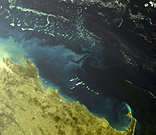
Great Barrier Reef
26. July 2005,
orbit: 17805
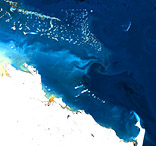
C2R RGB
Channels: 6, 5, 2
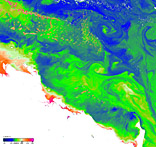
Pigment absorption coefficient
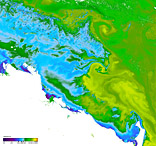
Quality measure of the inversion procedure (chi square)
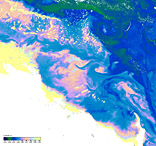
Minimum downwelling irradiance atenuation coefficient
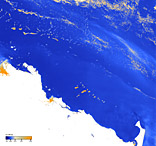
Aerosol optical thickness at 550nm
Click on the small images above to get the full resolution image (appr. 5÷6MB)

